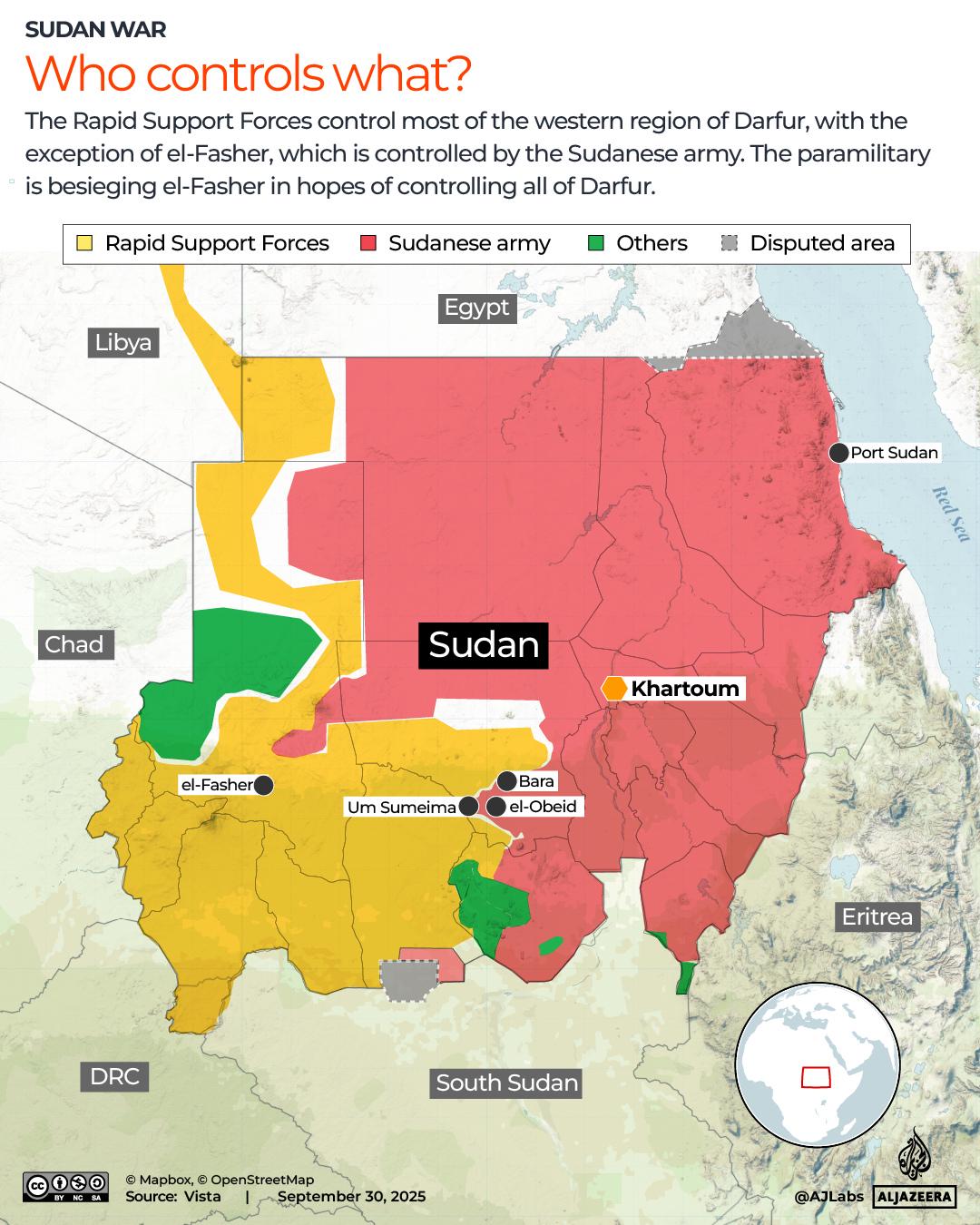Sudan War Control Map


Marcus Rodriguez
Historical Geography Expert
Marcus Rodriguez specializes in historical cartography and geographic data analysis. With a background in both history and geography, he brings unique...
Geographic Analysis
What This Map Shows
The "Sudan War - Who Controls What?" map provides a detailed visualization of the territorial control in Sudan amidst the ongoing conflict. It illustrates the different factions involved in the war, highlighting areas controlled by the Sudanese Armed Forces (SAF), the paramilitary Rapid Support Forces (RSF), and other opposition groups. This kind of mapping is crucial for understanding the complexities of the conflict, as territorial control directly influences humanitarian access, resource distribution, and civilian safety.
Deep Dive into Territorial Control in Sudan
In the context of the Sudan War, territorial control signifies not just physical dominance but also political and economic power. The fighting primarily centers around key urban centers such as Khartoum, the capital, and other strategic locations like Darfur and South Kordofan. The SAF, which is the official military, has sought to maintain control over these vital areas, while the RSF has emerged as a significant player, often contesting territory and influence.
Interestingly, what’s fascinating is how the control zones have shifted rapidly due to the fluid nature of warfare. For instance, in early 2023, the RSF gained considerable ground in urban areas, leading to increased violence and civilian displacement. According to reports, as of mid-2023, the RSF controlled a substantial part of Khartoum, complicating the government’s ability to respond and maintain order.
Demographically, the regions under control can vary dramatically. The SAF primarily holds sway in more rural and traditionally government-supporting areas, while the RSF has garnered significant support in regions where historical grievances and ethnic considerations play a role. This leads to a patchwork of control that complicates peace efforts.
Moreover, the humanitarian implications of this control cannot be overstated. With the RSF controlling many urban locales, civilians trapped in conflict zones face dire shortages of food, water, and medical care. Data from international organizations indicate that millions have been displaced, with refugee camps overflowing and resources stretched thin.
Regional Analysis
When analyzing the map, it’s essential to break down the control zones by region. In northern Sudan, the SAF retains significant control, particularly in areas rich in natural resources like gold mines. However, the RSF has made inroads into the southern regions, capitalizing on local support and exploiting grievances against the central government.
In Darfur, where the conflict has historical roots dating back to the early 2000s, the RSF has a strong presence, often acting independently of the national army. Reports suggest that in some areas, the RSF operates with the tacit approval of local leaders, leading to a complex relationship between insurgents and traditional power structures. This regional variation highlights the multifaceted nature of the conflict, where alliances can shift rapidly based on local dynamics.
Interestingly, some areas have seen a temporary ceasefire, allowing for humanitarian corridors to open. However, these are often short-lived, as control over territory remains contested. The map vividly illustrates how these zones of control can create pockets of relative safety surrounded by conflict, complicating aid efforts.
Significance and Impact
The implications of territorial control in Sudan extend far beyond the battlefield. Understanding who controls what is crucial for international actors as they navigate humanitarian aid and potential diplomatic solutions. The fragmented control complicates peace negotiations, as different factions have differing agendas and levels of legitimacy.
Moreover, the ongoing conflict has broader regional implications. Neighboring countries, particularly South Sudan and Chad, are impacted by the influx of refugees and destabilization. The international community is watching closely, as the potential for a spill-over effect could lead to a wider regional conflict.
As we look toward the future, projections indicate that unless there’s a concerted effort towards peace and reconciliation, the cycle of violence may continue. The control map serves as a stark reminder of the ongoing struggle for power and the dire humanitarian needs that arise from such conflicts. It’s vital for stakeholders to understand these dynamics if they hope to contribute to a peaceful resolution in Sudan and the surrounding regions.
Visualization Details
- Published
- October 18, 2025
- Views
- 32
Comments
Loading comments...